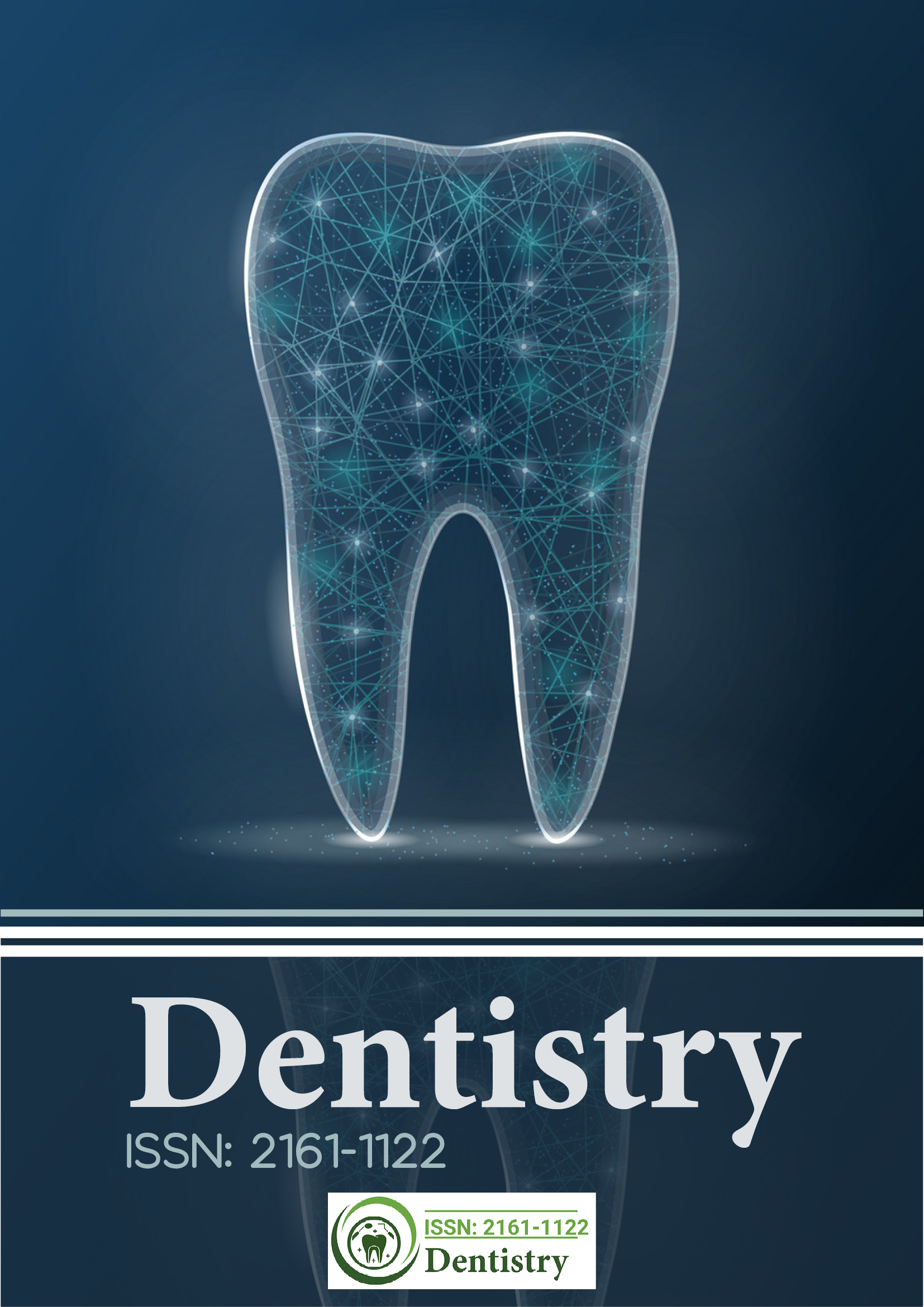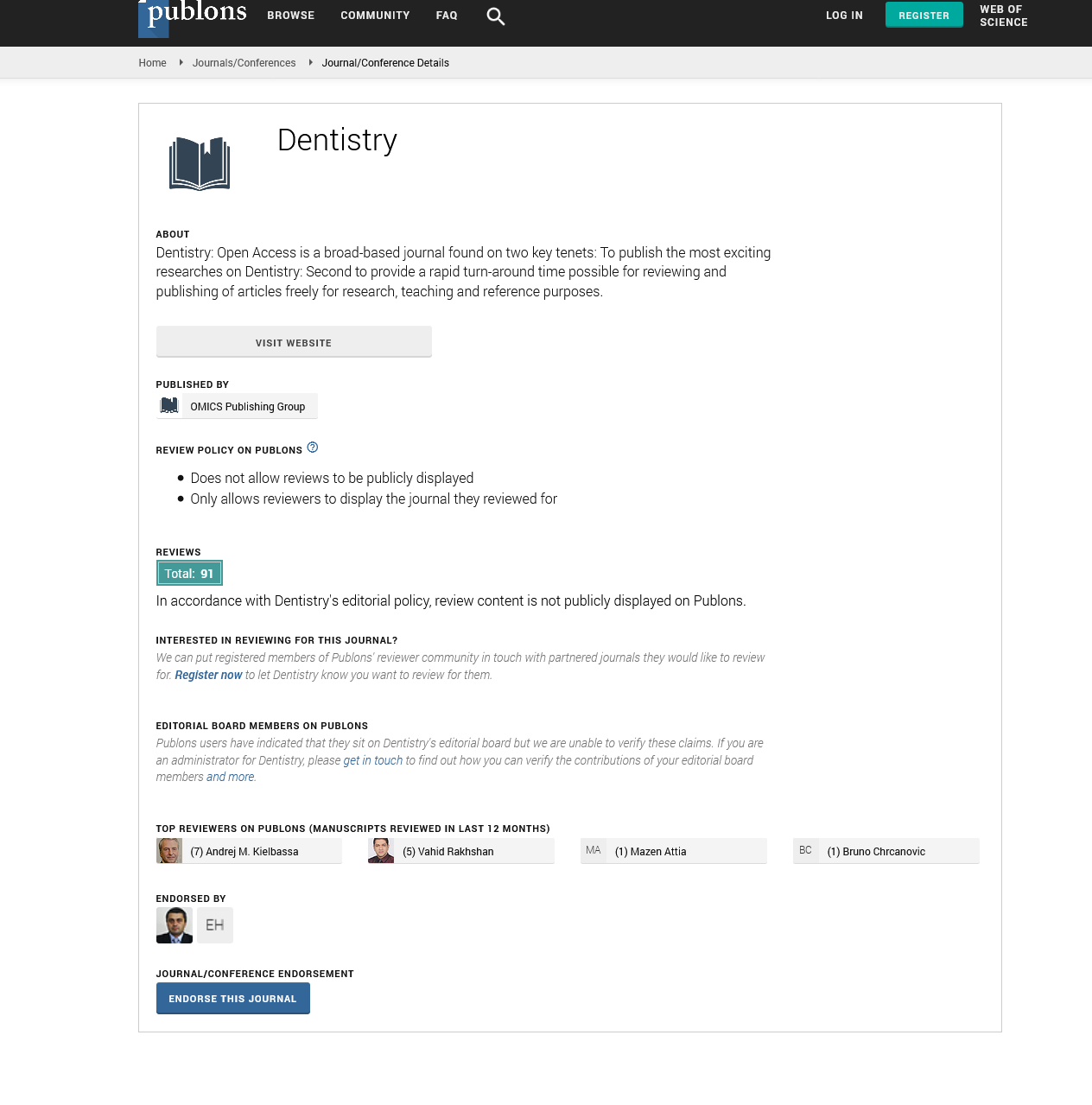Citations : 2345
Dentistry received 2345 citations as per Google Scholar report
Indexed In
- Genamics JournalSeek
- JournalTOCs
- CiteFactor
- Ulrich's Periodicals Directory
- RefSeek
- Hamdard University
- EBSCO A-Z
- Directory of Abstract Indexing for Journals
- OCLC- WorldCat
- Publons
- Geneva Foundation for Medical Education and Research
- Euro Pub
- Google Scholar
Useful Links
Share This Page
Journal Flyer

Open Access Journals
- Agri and Aquaculture
- Biochemistry
- Bioinformatics & Systems Biology
- Business & Management
- Chemistry
- Clinical Sciences
- Engineering
- Food & Nutrition
- General Science
- Genetics & Molecular Biology
- Immunology & Microbiology
- Medical Sciences
- Neuroscience & Psychology
- Nursing & Health Care
- Pharmaceutical Sciences
Commentary - (2025) Volume 15, Issue 2
Digital Technology as a Resource for Parental Guidance in Oral Health
Vittorio Dolara*Received: 26-May-2025, Manuscript No. DCR-25-29699; Editor assigned: 28-May-2025, Pre QC No. DCR-25-29699 (PQ); Reviewed: 11-Jun-2025, QC No. DCR-25-29699; Revised: 18-Jun-2025, Manuscript No. DCR-25-29699 (R); Published: 25-Jun-2025, DOI: 10.35248/2161-1122.25.15.725
Description
Social media has transformed communication in healthcare, influencing education, practice and public engagement. In paediatric dentistry, digital platforms are increasingly used to educate parents, improve oral health awareness and promote preventive care. This narrative review examines the role of social media in paediatric dentistry, analyzing its applications in parental education, professional development, practice promotion and public health campaigns. Ethical considerations, challenges and emerging trends are discussed to provide a comprehensive understanding of its evolving impact.
Digital communication has reshaped healthcare interactions, creating new pathways for patient engagement, education and professional collaboration. Paediatric dentistry relies on both direct patient care and effective communication with parents or guardians. Social media platforms facilitate these interactions, enabling dental professionals to provide guidance, raise awareness and disseminate educational content efficiently. The increasing reliance on online platforms necessitates understanding their role, benefits, limitations and ethical considerations.
Social media platforms in paediatric dentistry
Various social media platforms serve distinct purposes in paediatric dentistry. Visual platforms allow the sharing of educational videos, infographics and step-by-step guides for oral hygiene practices. Professional networks support knowledge exchange, research collaboration and continuing education. Short-form video platforms engage parents and caregivers with concise content on preventive care, treatment preparation and post-treatment instructions. The choice of platform depends on the intended audience, type of content and desired level of interaction.
Parental education and awareness
Parents are primary caregivers and decision-makers in children’s oral health. Social media offers a direct channel to provide accurate, evidence-based information on preventive care, dietary practices, oral hygiene and management of common dental issues. Digital content can address misconceptions, encourage early dental visits and guide parents in handling emergencies. Interactive posts and multimedia content enhance comprehension and engagement, increasing the likelihood of positive oral health behaviors among children.
Professional development and networking
Social media facilitates continuous professional development and networking among paediatric dentists. Dental associations, academic institutions and practitioners share webinars, online conferences and research findings through digital platforms. Professional communities provide opportunities for mentorship, discussion of clinical cases and exchange of treatment strategies. These interactions enhance knowledge sharing, foster collaboration across regions and contribute to improvements in clinical practice.
Practice promotion and patient engagement
Social media serves as a tool for promoting paediatric dental practices while maintaining educational value. Posts highlighting services, preventive programs and patient success stories help build trust and attract new patients. Platforms also allow communication regarding appointments, health campaigns and community events. Proper use of social media in practice promotion requires adherence to professional standards, maintaining patient confidentiality and avoiding misleading claims.
Public health communication
Beyond individual practices, social media supports public health initiatives aimed at children’s oral health. Campaigns on topics such as fluoride use, sugar consumption, injury prevention and oral hygiene reach a broad audience efficiently. Digital platforms enable real-time dissemination of guidelines and recommendations, complementing traditional health education programs. These campaigns enhance community awareness and contribute to population-level improvements in oral health outcomes.
Ethical considerations
Ethical challenges are central to the use of social media in paediatric dentistry. Protecting patient confidentiality is mandatory when sharing clinical images or case details. Informed consent must be obtained for any content involving patients. Additionally, practitioners must ensure that shared information is evidence-based, avoiding the dissemination of misleading or commercially biased content. Maintaining professional boundaries between personal and professional online presence is essential to uphold trust and credibility.
Social media has become an influential component in paediatric dentistry, contributing to parental education, professional development, practice promotion and public health initiatives. While offering considerable benefits, responsible use is necessary to address ethical concerns, maintain accuracy and ensure equitable access. Understanding the evolving role of social media is essential for practitioners seeking to integrate digital communication into clinical practice and educational activities effectively. Continued research and adherence to professional standards will support its optimal application in improving children’s oral health outcomes.
Citation: Dolara V (2025). Digital Technology as a Resource for Parental Guidance in Oral Health. J Dentistry. 15:725.
Copyright: © 2025 Dolara V. This is an open-access article distributed under the terms of the Creative Commons Attribution License, which permits unrestricted use, distribution, and reproduction in any medium, provided the original author and source are credited.

